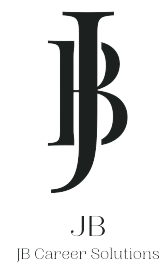Changing careers in your mid-30s, 40s, or even 50s can feel daunting, but it’s also one of the most powerful decisions you can make. A career change at this stage isn’t about starting over; it’s about repositioning your skills, experience, and value for something new. With the right approach, it can open the door to more aligned, fulfilling work.
You’re not alone in this.
Every day, I work with professionals who are ready for something different but unsure how to package their experience for a new direction. That’s why I always say: you don’t need to start over, you need to reposition.
Here’s how to approach your career change with clarity, confidence, and strategy.
1. Reframe Your Experience Around Transferable Value
Forget “years of experience” for a second. What matters more is how your skills transfer.
For example, a teacher moving into learning & development could highlight:
- What problems have you solved?
- What tools or systems have you mastered?
- What kinds of people or clients have you worked with?
- What challenges did you overcome?
Example: A teacher moving into learning & development could highlight:
- Workshop facilitation
- Curriculum design
- Performance assessment
- Stakeholder communication
Your resume should connect the dots between what you’ve done and where you’re going.
2. Tailor Your Resume to the Role You Want
A generic resume won’t work when you’re making a pivot.
To make your resume work harder for you, be sure to:
- Lead with a professional summary that reflects your desired direction, not just your past
- Emphasize transferable accomplishments, not industry jargon
- Include a skills section that reflects what’s needed in your new field
- Remove early career roles that no longer serve your story
As a Toronto resume writer, I specialize in crafting resumes that enable career changers to transition into new industries without compromising their credibility.

3. Align Your LinkedIn Profile for Visibility
LinkedIn is your career billboard, and during a career change, it should reflect who you’re becoming.
Update your:
- Headline to reflect your new direction (“Aspiring HR Professional with Strong Client-Facing Experience”)
- About section to tell your why (e.g. “After a decade in hospitality, I’m shifting into operations to leverage my people and process skills…”)
- Skills section to match industry expectations
Additionally, don’t forget to turn on “Open to Work” so recruiters know you’re actively looking for new opportunities.
4. Practice a Confident Career Story
You don’t have to justify your change; you need to own it.
During interviews or networking conversations, it’s important to share a clear, compelling narrative that answers:
- What drew you to your current career
- What inspired the shift
- What strengths you bring into the new role
- What you’re excited about next
A confident pivot sounds like:
“After 12 years in customer service, I realized my favorite part was solving backend process issues. That led me to pursue a certification in business operations—and I’m excited to bring that insight into a coordinator or analyst role.”
5. Invest in Tools That Position You Properly
The truth is, most people making a career change don’t need more experience; they need a better way of presenting the knowledge they already have.
For that reason, strategic support makes all the difference.
To help you pivot confidently, our Pivot & Rebrand Package includes:
- A resume focused on transferable skills and future-facing potential
- A cover letter that frames your pivot with confidence
- A LinkedIn profile aligned to your new direction
- A coaching session to sharpen your story and strategy
Changing careers at 35, 40, or 50 isn’t a setback; it’s a bold step forward.
You’re not starting from scratch. You’re building on a foundation of experience, maturity, resilience, and skills that many people in your target field wish they had.
And with the right positioning, your next chapter could be your best yet.
Ready to make your pivot? Let’s do it together.
Book your free discovery call and learn how we can support your career change with strategy, confidence, and a resume that opens the right doors.


